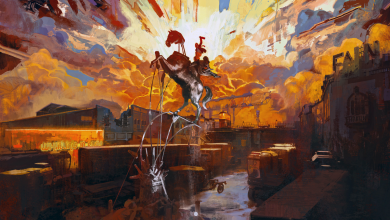“Rated X”: Film Ratings and Their Implications for Sex and Violence
For decades, much controversy has surrounded the Motion Picture Association of America’s (MPAA) film-rating decisions. Aspects featured in films, including language, drug use, sexual acts and violence, have been debated on both sides of the issue, raising questions like:
What are the lines between “R-rated” films and that of “NC-17”? To what extent does a movie border on educational and obscene? Does it even matter if a movie is obscene?
Censorship in films is not a recent construction. With the commercialization of sound film, or the “talkie” in the 1920’s, guidelines governing which motion pictures were suitable for the public audience sprang up as well. One such guideline was the notorious Motion Picture Production Code (“the Hays Code”) from the 1930’s. With its “The Don’ts and Be Carefuls” list of inappropriate contents, the Hays Code set up the rules and regulations for judging the suitability of films.
Some of the rules seem shockingly prudish in today’s perspective, including the use of profanity (in words like “hell,” “damn,” and “gawd”), miscegenation, and even the desecration of the clergy. In 2014, these guidelines are considered ludicrous, and are constantly being featured in films (especially profanity).
Honestly, what would the world be like without films like Blades of Glory or Superbad, which go against all of these criteria? What a relief it must have been when the code was finally abandoned in 1968, right?
However, in place of the Hays Code, the MPAA film rating system was born, and it continues to be in effect today. Presently, we have a mix of films with all sorts of different ratings, such as “G,” “PG-13,” or “R.”
However, what piques interest is the less-common “NC-17” rating, defined as “No One 17 and Under Admitted.” The successor to the non-trademarked “X” rating, NC-17 has stirred much controversy since its enactment in 1990.
Critics continue to question whether a film “deserves” such a rating. In other words, where does one draw the line in designating between “R” and “NC-17?”
Even further, people have criticized the film association for more harshly judging films with sex than those with violence.
Movie critics like the late Roger Ebert have reprehended the MPAA for allowing films with violence, torture and extreme gore the “R” rating while those with nudity and sexually-explicit scenes are given “NC-17.”
Even Chicago Tribune film critic Michael Phillips has blasted the film association for being “too easy on violence yet bizarrely reactionary when it comes to nudity and language.”
For instance, although horror films (the highly-popular Saw series) and those of war (Saving Private Ryan) were granted the “R” rating, the film directors had to agree to edit scenes in order for a more “appropriate” wide theatrical release.
The question is, at what point is a film “appropriate” enough for “R”? Is it by removing a few minutes of terror and torture? Or is it eliminating images of dead and mutilated corpses?
I don’t buy the fact that just getting rid of several instances of really intense violence lightens up the nature of the film. In other words, it is still violent.
That is why I don’t understand why the MPAA would allow such brutal films, which can be quite traumatic to the psyche, to be judged less harshly than those with sexually-explicit content.
True, sex scenes can be just as graphic as violent ones, but they can also be beautiful. Sex is a part of the human experience in all aspects, physically, socially and biologically, and it is a shame that the United States’ film industry simultaneously advertises and criticizes it.
We can’t seem to make up our minds on sex; we struggle to balance between encouraging it and being prudish.
This issue about sex is also an issue when it comes to gender. Whether we like to admit it or not, we still live in an androcentric society. Therefore, many films focus on men’s sexual pleasure over that of women’s. It is the men who get the last word on sex or, should we say, the last orgasm.
In the movies, women rarely, if at all, receive screen time for their own sexual gratification. And when they do show it, such as in the case of Michelle Williams in Blue Valentine, they are slapped the NC-17 rating, whereas films like Forgetting Sarah Marshall are given “R,” even though it shows a similar situation, but from the male’s perspective. Again, guys: we live in a male-dominated world (pun intended).
Surprisingly though, films in recent years like Lust, Caution (2007), Shame (2011), and Blue is the Warmest Color (2013) were given the NC-17 rating right off the bat, but it didn’t stop them from receiving critical acclaim from both movie-goers and film critics. This shift from seeing “sex movies” as “pornos,” to regarding them as art forms, is really amazing and shows that although NC-17, they can also be as financially successful as the Saw series.
Altogether though, a film is a film is a film. The cinematic experience is for entertainment purposes, not a resource for all of this arbitrary censorship.
If you want a more information on the MPAA, I encourage you to watch the film, “The Film Is Not Yet Rated,” which goes into further depth about the ratings system’s guidelines and effects on American culture. And funny enough, it was rated NC-17.




